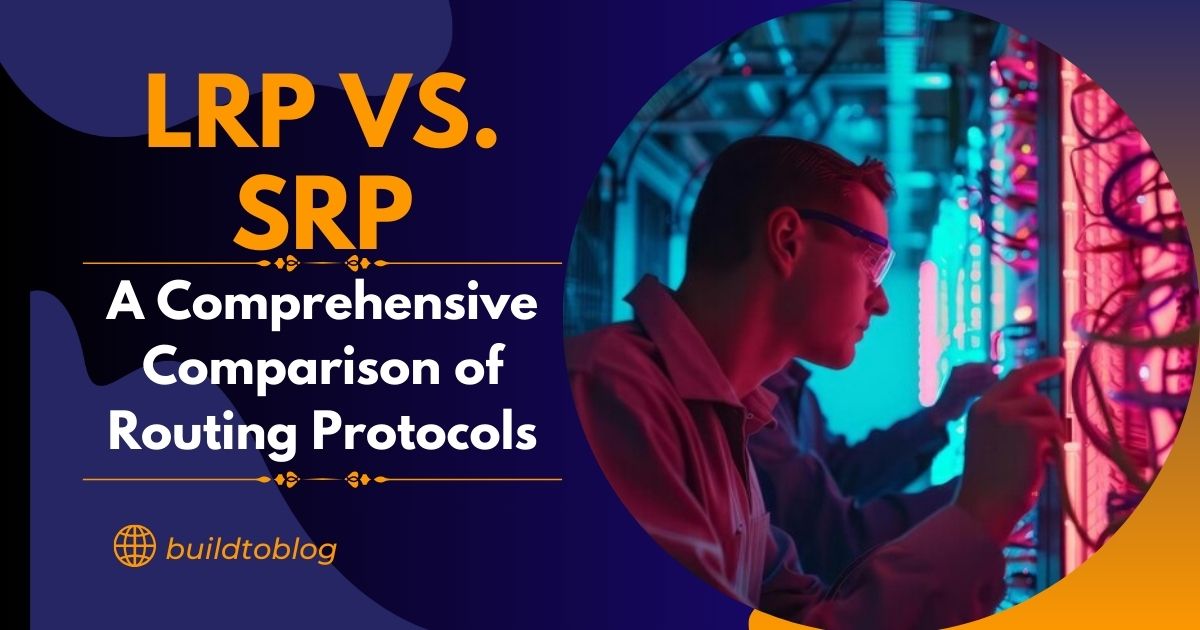Data packets’ optimal routes across linked networks are determined by routing protocols, which are essential parts of computer networking. Some of the most well-known routing protocols are Link-State Routing Protocol (LRP) and Shortest Path Routing Protocol (SRP).Learn the key differences in LRP vs SRP for network efficiency; discover how Link-State and Shortest Path Routing Protocols optimize data. Knowing the ins and outs of the two protocols is crucial because of the specific features and applications that each offers. Examining the inner workings, benefits, and drawbacks of both LRP and SRP, this article presents a comprehensive comparison.
Understanding Link-State Routing Protocol (LRP)
The goal of the dynamic routing protocol known as Link-State Routing Protocol (LRP) is to accurately depict the topology of a network. The LRP protocol requires all routers to keep track of the data pertaining to their own lines. With this data, routers can see the whole network. To communicate its connection status to other nodes, every router sends out connection-State Advertisements (LSAs). So that every router can keep an up-to-date map of the network, LSAs contain information about the router’s direct connections.
LRP vs. SRP: How LRP Operates
If you want to know the optimum way to send data, LRP routers will employ the SPF algorithm, developed by Dijkstra. In the event that a connection fails, LRP promptly recalculates routes according to the revised topology. Thanks to this quick convergence, downtime is minimised and data is routed efficiently. With LRP, the likelihood of routing loops—which can impede data flow—is greatly reduced as every router gets a comprehensive picture of the network.
Advantages of LRP
Scalability is the main benefit of LRP. Because of the comprehensive routing information it provides, it is able to efficiently handle complicated and vast networks. One of LRP’s advantages is its rapid convergence; in the event of a change, such a link breakdown, routers adjust swiftly to keep data flowing optimally. In addition to improving network performance generally, LRP’s all-encompassing network perspective enables better routing decisions.
Limitations of LRP
While LRP does have certain benefits, it also has significant downsides. Since every router keeps an exhaustive map of the network, it necessitates a lot of RAM and processing power. In smaller networks with less resources, this demand might cause operating expenses to rise. Furthermore, LRP, particularly in settings where topology changes often, can be difficult to set up and administer.
LRP vs. SRP: Understanding Shortest Path Routing Protocol (SRP)
One less complicated option than LRP is the Shortest Path Routing Protocol, or SRP. Finding the quickest route for data transfer using localised information is the main emphasis of SRP, as the name indicates. A complete network view is not necessary for SRP, in contrast to LRP. Instead, each router uses its own internal state information to choose the optimal path through the network.
How SRP Operates
When calculating distances between nodes, SRP often uses techniques such as the Bellman-Ford algorithm. By regularly exchanging information on its nearby neighbours and the expenses associated with them, routers allow each other to dynamically choose the quickest pathways. Without needing a comprehensive map of the network, SRP is able to make rapid routing decisions using this method.
Advantages of SRP
The straightforwardness of SRP is a major plus. When opposed to LRP, SRP is more efficient with resources since it eliminates the need for routers to keep a comprehensive network map. Because of its efficiency, SRP is a great option for lower-powered networks. Because routers are always updating their routing tables with the most recent information, SRP can also swiftly adjust to changes in the network.
Limitations of SRP
Even though SRP is great, it does have certain restrictions. In complicated network topologies in particular, inefficient routing decisions might result from an incomplete picture. SRP depends on individual routers to exchange updates instead of having a global view, which means it could take longer for the network to converge if the topology undergoes major changes.
Key Differences Between LRP vs SRP
The operational methods are where LRP and SRP vary the most. When making routing decisions, LRP consults a comprehensive network map, whereas SRP depends on data specific to a given location. The performance of the network and the amount of resources needed are both affected by this basic difference. For bigger networks, LRP’s scalability and fast convergence are ideal, whereas for smaller networks, SRP’s simplicity and efficiency are more to the point.
Choosing Between LRP vs SRP
Your network’s unique requirements and features should guide your decision between LRP and SRP. Since LRP can handle scalability and quick changes so well, it can be the superior option for your organisation if it runs a big, complicated network that experiences enormous traffic needs. Conversely, SRP might offer a straightforward and effective approach when dealing with a smaller network that demands less complexity.
Conclusion
In conclusion, various networking situations call for the use of Link-State Routing Protocol (LRP) or Shortest Path Routing Protocol (SRP), each of which has its own set of benefits and drawbacks. Because of its thorough topological knowledge and quick convergence capabilities, LRP performs very well in big, complicated networks. In contrast, SRP’s simple methodology makes it a great fit for smaller networks that have limited resources. Network administrators may better meet their organization’s demands with well-informed routing plans when they understand the features of these protocols..
FAQs
What is the main difference between LRP and SRP?
The main difference is that LRP uses a complete network map for routing decisions, while SRP relies on localized information.
When should I use LRP over SRP?
Use LRP in large and complex networks where rapid convergence and scalability are essential.
What are the advantages of using SRP?
SRP is simpler and less resource-intensive, making it suitable for smaller networks.
Can LRP and SRP work together in a network?
Yes, in some scenarios, both protocols can coexist, allowing networks to leverage their respective strengths.
How do LRP and SRP handle network changes?
LRP quickly recalculates routes based on a complete network view, while SRP relies on individual routers to share updates dynamically





